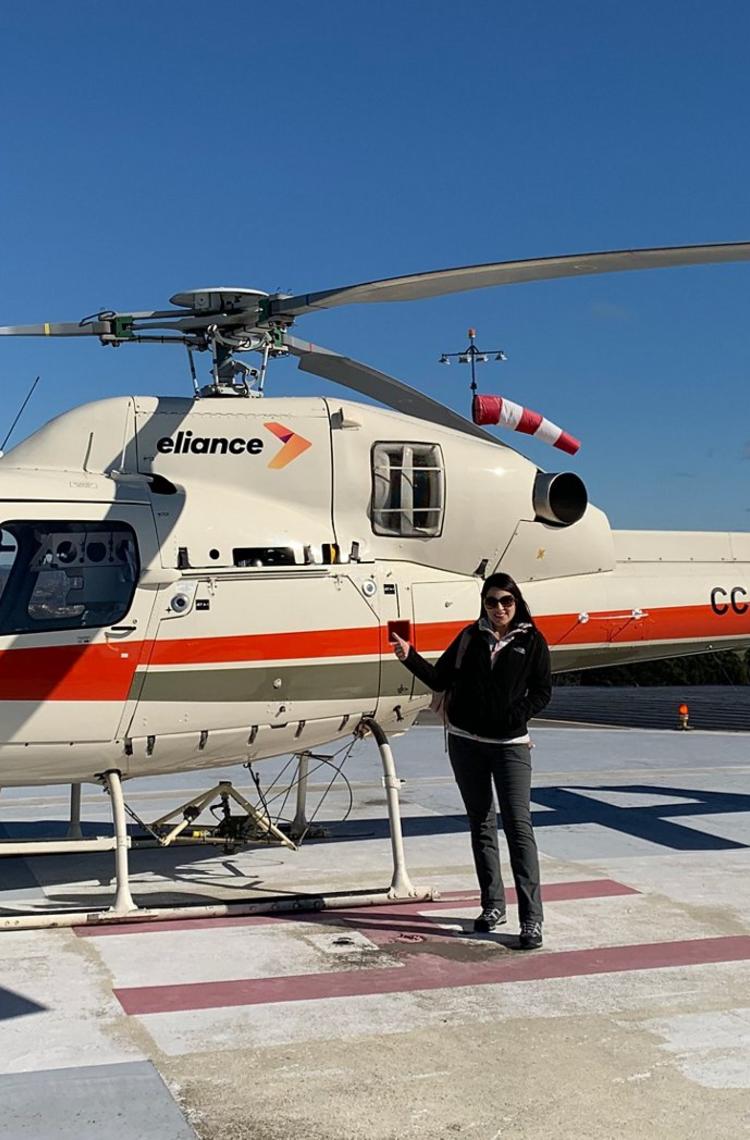As an in-flight medical director for emergency services provider Eliance in Chile, Dr. Karina Flores Rojas does some of her most critical work hundreds of feet above the ground with adrenaline surging – and she wouldn’t have it any other way.
“I can say without any exaggeration that I adore my job,” said Flores Rojas, who began taking part in HEMS (Helicopter Emergency Medical Services) operations while working at the Aerospace Medicine Centre of the Chilean Air Force (FACh) – which she joined after graduating as a doctor.
Flores Rojas has worked in different roles with various HEMS service providers since 2017, including medical management and medical crew tasks. This includes her time as Head of Aviation Medicine for the Chile’s Directorate General of Civil Aviation (DGAC) – which focussed on establishing rules and procedures for local air ambulances.
A profession unlike any other
Today, Flores Rojas works with Eliance – a Spanish-based company with air bases in Chile, Spain, Italy and Argentina. In addition to its HEMS operations, the company performs duties that range from search and rescue missions, firefighting and aerial work to passenger transportation, cargo airlift, inspection of power/gas lines, and aerial photography.
Eliance’s global inventory of fixed-wing and rotary-wing aircraft includes an all-Airbus-built fleet of helicopters, composed of the H145, H135, H130, AS355 and AS350.
I can say without any exaggeration that I adore my job.
- Dr. Karina Flores Rojas, Medical Director, Eliance
“Complementing urgent medical assistance with aerospace medicine while in the air and saving people’s lives thanks to the rapid response provided by aerial resources is something you don’t get in other jobs,” Flores Rojas explained. “Every flight is a new challenge.”
Planning for success
To be ready for any situation that may arise, Flores Rojas underscored the importance of preparation and forward-thinking – especially when it comes to a patient’s treatment plan, which should be established before they are loaded on an aircraft.
Every flight is a new challenge.
- Dr. Karina Flores Rojas
According to Flores Rojas, it also is important that the crew members – including the on-board medic, the rest of the medical staff on board, and pilot – work together as a tightly-knit team with a sole objective: saving lives without endangering aerial operations.
“As a medical director, I consider it essential for medical crews to have a grasp of basic aircraft aerodynamics and operational security, and pilots should also have an understanding of patient care and aerospace medicine,” she said. “It’s the only way they can speak the same language so that each of them can understand the tasks the other person has to perform.”
A common understanding for HEMS crews
For example, a patient may be suffering respiratory insufficiency – which could be further complicated if subjected to hypoxia, meaning the pilot might have to remain at a certain altitude for the rest of the flight. It is crucial for pilots to understand why they need to fly lower so they can warn the medic if this is impossible. That way the medic can assess whether airlifting the patient is indeed the best option available.
She concluded: “It’s also fundamental for the medical crew to understand that flights depend on the operational and meteorological conditions, and in many cases a flight may be impossible if the conditions are unsafe.”





